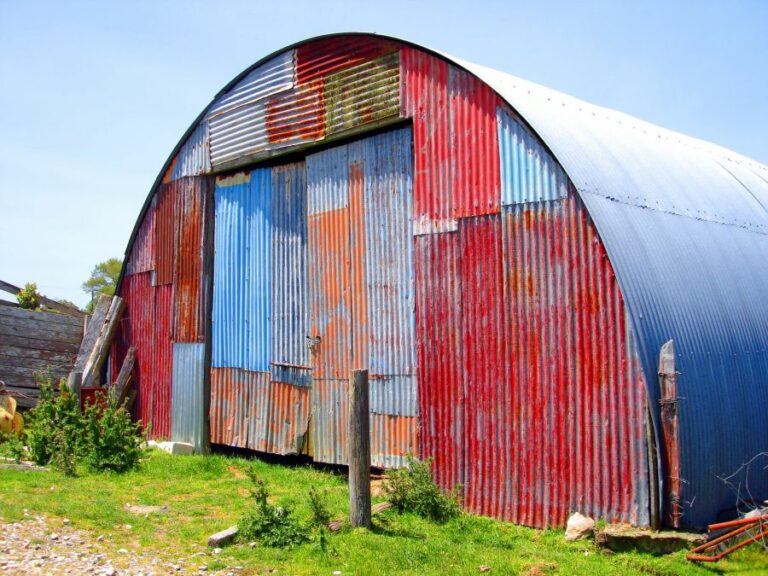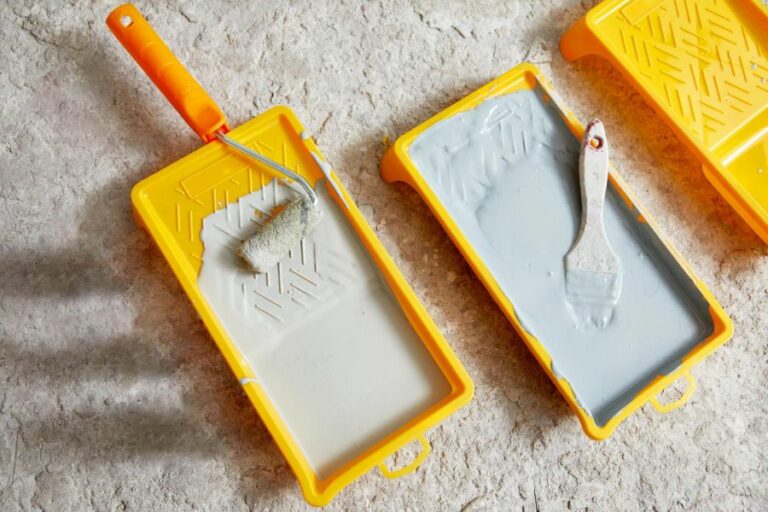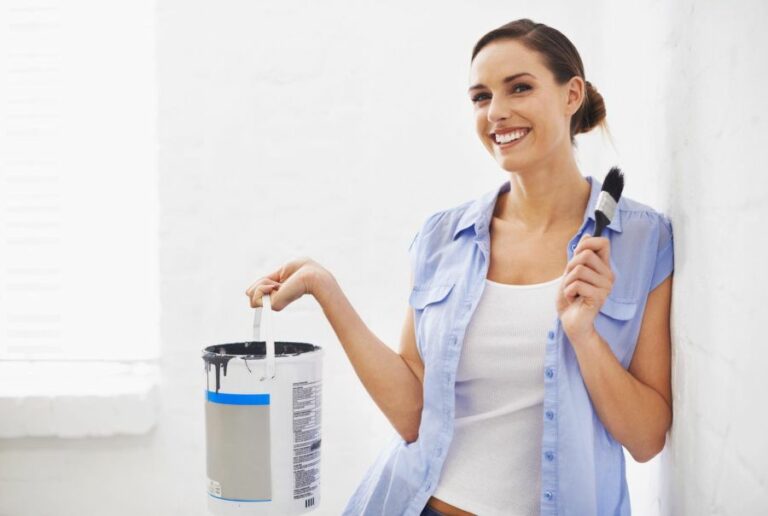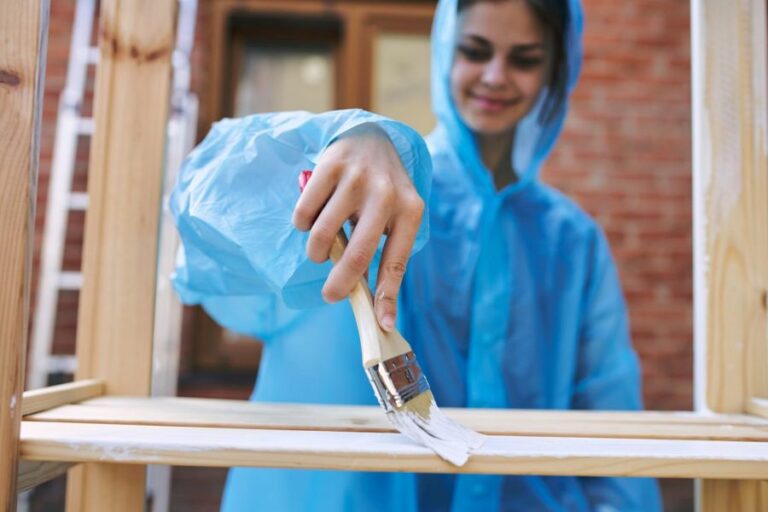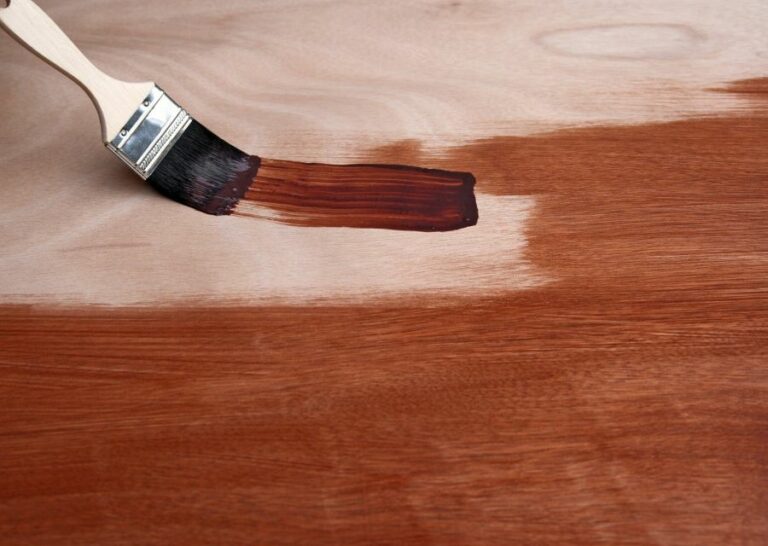Outdoor Concrete Paint Ideas, 25 Things You Should Know
Are you looking to revamp your outdoor concrete spaces with a fresh coat of paint? Look no further! This blog post has creative and inspiring designs to bring life back to your patios, walkways, and more. From vibrant colors to intricately detailed stencils, these ideas will help transform your drab concrete surfaces into eye-catching works of art.
Outdoor concrete paint ideas:
Upgrade outdoor concrete surfaces with concrete paint, available in various finishes like matte, glossy, and satin. For enhanced durability and weather resistance, ensure you choose the right paint type, such as epoxy, acrylic, or elastomeric. Different ideas include solid colors, textured finishes, stencils, patterns, or mimicking natural stone/wood appearances. Consider using specialized paints for garage floors, while pool decks should have slip-resistant and heat-reflecting paint for safer surfaces.

Explore creative possibilities to enhance your outdoor concrete surfaces! Discover fresh, eye-catching paint ideas for patios, driveways, walkways, and more. Learn the best techniques and trends for long-lasting, stylish durability. Ready to transform your space? Let’s venture on this colorful journey together!
Contents
- 1 Innovative Ideas for Painting Outdoor Concrete Surfaces
- 2 Which Kind of Paint is Most Suitable for Exterior Concrete Surfaces?
- 3 Is outdoor concrete painting a long-lasting solution?
- 4 Is Applying Paint on Concrete Surfaces a Suitable Option?
- 5 What is the Ideal Color for Painting Concrete Surfaces?
Innovative Ideas for Painting Outdoor Concrete Surfaces
Upgrading the look of your outdoor concrete surfaces can be both fun and practical. Concrete paint not only adds color and style but also serves to enhance the durability of your outdoor areas. Discover a range of outdoor concrete paint ideas to suit different surfaces, budgets, and design preferences.
• Quick Guide to Choosing the Right Outdoor Concrete Paint
Choosing the right concrete paint for your outdoor surfaces is essential for achieving a long-lasting and visually appealing result. Make sure you consider the following factors when making your selection:
- Surface preparation: Make sure the concrete surface is clean, dry, and free of any damage or imperfections before painting. For fresh concrete, wait at least 28 days before painting.
- Paint type: Look for paint specifically designed for outdoor concrete surfaces. These paints are more durable, weather-resistant, and adhere better than regular paints. Popular types include epoxy, acrylic, and elastomeric paints.
- Finish: Outdoor concrete paints come in various finishes, including matte, glossy, and satin. A matte finish provides a subdued look, while glossy and satin finishes give a shiny appearance.
- Color: When selecting a color, consider your painting area and the surroundings. Bright colors may fade faster under direct sunlight, while darker shades may absorb more heat and cause premature wear.
- Safety: Some concrete paints contain anti-slip additives to ensure slip-resistant surfaces, which is essential for high-traffic or wet areas.
• Outdoor Concrete Paint Ideas: Driveways, Patios, and Walkways
Driveways, patios, and walkways are common outdoor concrete areas that can benefit from paint. Explore these paint ideas for a fresh, stylish look:
– Solid Colors
Applying a single, solid color is a simple yet highly effective way to enhance your outdoor concrete surfaces. The wide range of paint colors available ensures endless possibilities.
Neutral shades like gray, beige, or sandstone will give a clean, timeless appearance, while bold colors like red, blue, or green can make a statement.
– Textured Finishes
Consider using textured concrete paint finishes to add some visual interest and depth. This can be achieved by applying multiple layers of paint in varying shades and using a sponge or brush to create a natural, uneven appearance.
This technique is perfect for replicating the look of stone or brick at a fraction of the cost.
– Stencils and Patterns
Create unique patterns on your outdoor concrete surfaces using stencils or masking tape. Popular patterns include geometric shapes, checkerboard designs, or even faux rug motifs. This method allows for a highly personalized design and can be as simple or intricate as you like.
– Natural Stone Look
Create the illusion of natural stone using paint techniques like sponge painting, tinted sealers, or specialized stone-finish paints. This approach can transform your outdoor area into an elegant, relaxing space that resembles a high-end resort.
• Outdoor Concrete Paint Ideas: Garage Floors
Garage floors can also benefit from a coat of paint, providing both visual appeal and added protection. Here are some ideas to consider:
– Epoxy Coating
Epoxy is a durable, long-lasting paint solution for garage floors. It provides a glossy finish that resists stains, chemicals, and abrasions. Available in a variety of colors, epoxy paint can be combined with decorative chips or flakes for a more interesting appearance.
– Decorative Chips or Flakes
These small flecks of color can be sprinkled over wet paint to create a textured, multicolored effect. Decorative chips or flakes can help hide imperfections and provide a more visually appealing garage floor.
– Checkerboard Pattern
Consider painting a checkerboard pattern if you’re looking for a classic garage floor design. This can be achieved by using masking tape to section off squares of alternating colors, creating a striking and timeless appearance.
• Outdoor Concrete Paint Ideas: Pool Decks
Pool decks are another popular outdoor concrete surface that can benefit from a fresh coat of paint. Providing a safe, slip-resistant surface is essential, and selecting the right paint is paramount. Here are some ideas for unique pool deck designs:
– Cool Deck Paint
Cool deck paint is formulated to reflect heat and cool surfaces underfoot. Available in various shades, these paints also contain additives to make the surface slip-resistant. Combining cool deck paint with stencils or geometric designs can create a functional and attractive poolside retreat.
– Faux Stone or Wood
Achieve the look of natural stone or wood without the cost or upkeep by painting your pool deck in these styles. Techniques like sponge painting or using specialized wood-look paint can provide a beautiful and unique appearance.
• In Conclusion
Outdoor concrete paint offers an affordable and creative way to update the appearance of your outdoor spaces. Whether you’re looking to spruce up a basic backyard patio or completely transform a pool deck, an outdoor concrete paint idea suits your style and budget.
Experiment with solid colors, textured finishes, or stencil designs to achieve a stunning and durable result.
Idea | Description |
|---|---|
Stamped Concrete | Use concrete stamps and paint to create the illusion of different materials such as brick, stone or wood. |
Stenciled Patterns | Apply paint using stencils to give your outdoor concrete surface a unique and decorative pattern. |
Solid Color | Choose a solid color paint to complement the exterior of your home and surrounding landscape. |
Textured Finish | Add texture to your outdoor concrete by incorporating paint and specialty materials, such as sand or pebbles. |
Faux Finishes | Use different paint techniques such as sponging or rag rolling to create a faux finish on your outdoor concrete. |
Which Kind of Paint is Most Suitable for Exterior Concrete Surfaces?
Exterior concrete surfaces can be found everywhere, from driveways and sidewalks to exterior walls and more. Finding the right type of paint to protect and beautify these surfaces is essential.
• Understanding Concrete and Its Challenges
Before diving into the types of paint suitable for exterior concrete surfaces, it’s essential to understand the unique challenges presented by concrete. Concrete is a porous material that readily absorbs water and other liquids.
Over time, this can lead to damage, as the freeze-thaw cycle causes expansion and contraction that can crack and weaken concrete surfaces.
Additionally, concrete surfaces are often exposed to harsh weather conditions and temperature fluctuations, making it essential to choose a paint that will provide both protection and durability.
• Preparing the Surface
In order to achieve the best results when painting exterior concrete, it’s important to prepare the surface properly. This includes:
- Cleaning the surface: Remove all dirt, debris, and loose paint from the surface with a pressure washer, stiff brush, or broom.
- Repairing any damage: Address any cracks, holes, or other damage with a specialized concrete patching product. Allow any repairs to dry completely before proceeding with painting.
- Applying a primer: It’s recommended to apply a high-quality concrete primer before painting to help fill in any small, imperceptible pores in the concrete surface and provide a smooth, uniform base for the paint to adhere to. This also helps to promote a longer-lasting paint job.
With the surface thoroughly prepared, you’re now ready to explore the different types of paint suitable for exterior concrete.
• Acrylic Latex Paints
Acrylic latex paints are a popular choice for exterior concrete surfaces due to their durability, flexibility, and ease of application. These water-based paints can handle temperature fluctuations and resist fading, chalking, and peeling, making them an ideal choice for areas with harsh weather conditions.
Moreover, acrylic latex paints are low in Volatile Organic Compounds (VOCs), which means they emit fewer harmful chemicals into the environment, a crucial consideration in today’s environmentally conscious world.
When selecting an acrylic latex paint for exterior concrete surfaces, I recommend opting for a product specifically designed for masonry and concrete applications. These paints often contain additional binders and ingredients that help them adhere better to concrete surfaces and provide enhanced durability.
• Elastomeric Paints
Another suitable option for exterior concrete surfaces is elastomeric paint. These unique coatings are composed of a high-solid, rubber-like substance that creates a thick, flexible layer on the surface of the concrete.
This layer is highly resistant to cracking and peeling and can even bridge small cracks and gaps in the concrete.
Elastomeric paints are an excellent choice for surfaces that are prone to considerable movement or experience significant temperature fluctuations. They are also highly durable, with a lifespan that can exceed ten years.
However, elastomeric paints can be more expensive than other options and may require specialized application techniques. It’s essential to carefully follow the manufacturer’s instructions to achieve the best results.
• Urethane and Epoxy Paints
Urethane and epoxy paints are known for their incredible durability and resistance to chemicals, making them a popular choice for commercial and industrial applications. These paints create a protective barrier on the surface of the concrete that can resist staining, abrasion, and chemical damage.
Although they offer superior performance in terms of durability, urethane, and epoxy paints can be challenging to apply and tend to be more expensive than other options.
Additionally, they may not be as forgiving in terms of flexibility and may be prone to cracking if applied to surfaces that experience significant movement.
• Comparison and Recommendation
When considering the various types of paints suitable for exterior concrete surfaces, there are several factors to keep in mind, including durability, flexibility, and environmental impact.
For most residential and light commercial applications, I recommend using acrylic latex paint specially formulated for masonry and concrete surfaces. These paints offer the perfect balance of durability, weather resistance, and environmental friendliness, making them ideal for a wide range of applications.
On the other hand, elastomeric paints can be an excellent choice for surfaces that experience significant movement or severe temperature fluctuations, while urethane and epoxy paints should be reserved for heavy-duty commercial or industrial applications requiring robust chemical resistance.
• Final Tips for a Successful Paint Job
Once you’ve selected the best type of paint for your exterior concrete surface, keep these tips in mind for a professional-looking finish:
- Choose high-quality paint: Investing in high-quality paint will make a significant difference in the performance and longevity of the paint job.
- Follow the manufacturer’s instructions: Carefully read and follow the instructions on the paint label, as this will help ensure proper application and optimal performance.
- Use the correct tools: Be sure to use the appropriate brushes, rollers, or sprayers for your paint type.
- Monitor weather conditions: Take note of the temperature and humidity levels, and avoid painting during periods of extreme weather that could impact the drying and curing process.
- Allow sufficient drying time: Always allow ample time for each coat of paint to dry before applying the next, as this will help ensure a long-lasting and professional-looking finish.
By following these guidelines and selecting the best type of paint for your exterior concrete surface, you can achieve a beautiful, durable result that will protect your surface for years to come.
Type of Paint | Advantages | Disadvantages |
|---|---|---|
Masonry Paint | Water-resistant, durable, resists peeling and chalking | May require prepping and priming, typically more expensive |
Acrylic Latex Paint | Easy to apply, fast-drying, easy to clean, low odor | Less durable, may require multiple coats for proper coverage |
Elastomeric Paint | Extremely durable, waterproof, excellent adhesion, bridges cracks | More expensive, harder to apply, may require professional application |
Epoxy Paint | Very strong and durable, chemically resistant, withstands heavy traffic | Difficult to apply, short pot life, may turn yellow in sunlight |
Is outdoor concrete painting a long-lasting solution?
Every homeowner and business owner wants to ensure that their property looks its best, including maintaining outdoor concrete surfaces. One of the most popular methods to beautify and protect outdoor concrete is by applying a coat of paint.
However, a primary concern among property owners is: Does painting outdoor concrete last?
• Factors that Contribute to the Longevity of Painted Outdoor Concrete
Several factors contribute to the lifespan of painted outdoor concrete. Understanding these factors is essential to ensure a lasting and durable finish when painting your concrete surfaces.
– Quality of Materials
The durability of a painted outdoor concrete surface is highly dependent on the quality of the materials used. High-quality concrete paint is specifically designed to withstand weather conditions, moisture, and UV exposure. It is crucial to use a paint formulated for outdoor use to ensure lasting results.
– Surface Preparation
Proper surface preparation is critical in determining the lasting effects of painting outdoor concrete. A clean and well-prepared surface will allow the paint to adhere better, resulting in a longer-lasting finish.
Surface preparation can include pressure washing, removing any loose or peeling paint, patching cracks or holes, and applying a concrete sealer.
– Application Technique
The application technique plays a significant role in the longevity of painted outdoor concrete. Using a suitable paint roller, brush, or sprayer and applying the paint in thin, even coats will result in a more uniform, durable finish.
Following the manufacturer’s instructions regarding the number of coats to apply and the recommended drying time between coats is also essential.
– Environmental Conditions
Another factor that will affect the lasting effects of painted outdoor concrete is the environmental conditions in your area, such as temperature, humidity, and exposure to sunlight. Extreme weather conditions can cause paint to deteriorate faster.
It is necessary to consider these factors when choosing a paint product and scheduling the painting project.
• Tips to Ensure a Durable and Long-lasting Finish
With a clear understanding of the factors that contribute to the durability of painted outdoor concrete surfaces, the next step is to ensure that you follow best practices for a long-lasting finish. Here are some tips and recommendations to help you achieve a successful project.
– Choose the Right Paint for the Job
Selecting a high-quality paint specifically designed for outdoor concrete is essential to ensure lasting results. Look for products that are labeled as “concrete” or “masonry” paint, as these are formulated to withstand weather conditions and provide excellent adhesion to concrete surfaces. Choosing a paint with built-in UV protection and resistance to mold and mildew is also a good idea.
– Follow the Manufacturer’s Instructions
Always read and follow the paint manufacturer’s guidance on application methods, suggested number of coats, and drying times. This will guarantee that you are using the product correctly and that it will perform as expected.
– Utilize a Concrete Sealer
Applying a concrete sealer before painting can help extend the life of the paint, particularly in areas subject to moisture or in regions with fluctuating temperatures. Sealers can act as a barrier, protecting the paint and the concrete from the negative effects of the environment.
– Regular Maintenance
Lastly, regular maintenance of your painted outdoor concrete surfaces can help prolong the paint job’s life. Keep the area clean, reapply a sealant as needed, and promptly address any signs of wear or damage to prevent further deterioration.
• Conclusion
In conclusion, painting outdoor concrete surfaces can last if you use high-quality materials, prepare the surface correctly, follow proper application techniques, and regularly maintain the surface.
By understanding the factors that contribute to the longevity of painted outdoor concrete and following best practices, you can create a durable, attractive, and long-lasting finish for your property.
Is Applying Paint on Concrete Surfaces a Suitable Option?
As an expert in the field of concrete and paint applications, I have been asked numerous times whether or not painting concrete is a good idea. It is a common misconception that painting concrete may cause damage or hinder its longevity.
• Advantages of Painting Concrete
– Enhancing Aesthetic Appeal
One of the most compelling reasons to paint concrete is to improve its appearance. Untreated concrete surfaces can look cold, industrial, and uninviting. Applying a layer of paint can drastically transform the look of the surface, making it more visually appealing.
– Protection From Weather Elements
Painting concrete can also help protect the surface from harsh weather conditions such as rain, snow, and UV rays. A high-quality paint application can act as a barrier, preventing water, mold, and mildew from penetrating the concrete. This, in turn, helps prolong the life of the concrete structure.
– Reducing Surface Maintenance
Painting concrete surfaces can reduce surface maintenance requirements. A well-applied layer of paint can prevent dust and dirt from accumulating on the concrete surface. This makes cleaning and general maintenance tasks more manageable and less time-consuming.
– Increasing Energy Efficiency
Believe it or not, adding paint to concrete surfaces can contribute to increasing a building’s energy efficiency.
Light-colored paint can help reflect sunlight, reducing heat absorption and maintaining a cooler interior temperature in the building. This can be advantageous for both residential and commercial properties alike.
– Safety and Visibility
Painted concrete surfaces can serve as a safety measure in commercial and industrial settings. Brightly colored paint can increase the visibility of specific areas or zones, making it easier for pedestrians and vehicle operators to navigate.
• Issues to Consider Before Painting Concrete
While there are numerous benefits to painting concrete surfaces, there are some concerns and challenges to consider before proceeding with a paint application.
– Surface Preparation
Preparing the concrete surface is critical to ensure proper paint adhesion. The concrete must be clean, dry, and free of any dust, dirt, or oils that may prevent the paint from bonding correctly. It may also be necessary to patch any cracks, holes, or imperfections to ensure a smooth and even finish.
– Moisture Issues
Concrete is naturally porous, which means it can absorb and retain moisture. If there is moisture present in the concrete, it can cause the paint to peel, bubble, or fail to adhere altogether. It is important to address any moisture issues before proceeding with painting the concrete surface.
– Choosing the Right Paint
Not all paints are created equal, and not all paints are suitable for concrete surfaces. It is essential to choose a paint specifically formulated for concrete use, often labeled as masonry paint or concrete paint.
These types of paints are designed to bond effectively with the concrete and provide long-lasting protection.
– Proper Application Technique
Applying paint to a concrete surface is not as simple as applying paint to other surfaces such as wood or drywall. For a successful paint application, it is recommended to use a primer specifically formulated for concrete surfaces.
Once the primer has dried, following the manufacturer’s guidelines for the paint application, such as the appropriate number of coats, drying times, and recommended application method is essential. It is crucial to adhere to these recommendations to achieve long-lasting results.
– Climate and Weather Concerns
The climate and local weather conditions play a crucial role in how paint adheres and performs on a concrete surface. It is essential to choose a paint that can withstand the specific climate conditions of your region.
It is also crucial to perform the paint application during optimal weather conditions, as temperature and humidity can drastically impact the paint’s performance.
• Final Thoughts and Recommendations
Given the numerous benefits of painting concrete, such as enhanced appearance, protection, and ease of maintenance, it is generally a good idea to paint concrete surfaces.
However, to achieve long-lasting and successful results, it is essential to consider the potential challenges and make sure to properly prepare the surface, choose the correct paint, and apply it with the right technique.
In my personal experience, I recommend consulting with a professional in the field of concrete and paint applications if you are uncertain about any aspect of painting a concrete surface.
They will possess the necessary knowledge and expertise to guide you through the process, ensuring that your newly painted concrete surface looks great and lasts for years to come.
What is the Ideal Color for Painting Concrete Surfaces?
Painting concrete surfaces is a practical solution for adding a touch of elegance and sophistication to any indoor or outdoor space. However, selecting the ideal color for the concrete can be challenging, given the wide array of available options.
• Factors to Consider When Selecting the Ideal Color
Before we delve into specific color recommendations, it’s essential to understand the factors influencing your color choice for concrete surfaces. These aspects will help you make an informed decision that best suits your needs and preferences.
– Location of the Concrete Surface
When contemplating the perfect color for your concrete surface, consider where it is located. If its an outdoor surface, such as a patio, walkway, or driveway, opt for colors that blend well with your home’s surrounding landscape or exterior design.
Select colors that complement the existing decor or design elements for indoor surfaces like garage floors or basements.
– Purpose of the Space
The function of the space surrounding your concrete surface can also influence your choice of color. For instance, if the area serves as a relaxation spot, you might want to choose soothing colors that create a serene atmosphere.
On the other hand, if the space is used for entertainment or social activities, consider more vibrant and energetic colors.
– Maintenance and Durability
While all concrete surfaces require some level of maintenance, certain colors may show dirt, stains, or wear more quickly than others. Light colors, for example, can highlight dirt, whereas dark shades may show scuff marks in high-traffic areas.
As such, you need to select a color that minimizes the appearance of these common issues to ensure a long-lasting finish and easy maintenance.
• Popular Color Choices for Concrete Surfaces
Considering the abovementioned factors, the following are popular and widely recommended colors for painting concrete surfaces in various settings.
– Earthy Tones
Earthy beige, sand, and light brown tones are among the top recommendations for outdoor concrete surfaces. These colors blend seamlessly with most landscapes and exteriors and offer a timeless and classic look.
If you’re looking to achieve a natural appearance or create an inviting pathway, I recommend opting for these warm and neutral shades.
– Greys
Greys are incredibly versatile when it comes to painting concrete surfaces. With numerous shades ranging from light to dark, grey can work well in almost any setting. For instance, a light grey color is ideal for garage floors as it conceals dust and dirt while also offering a neat and clean appearance.
Meanwhile, darker shades of grey can make a bold statement, especially when combined with contrasting accents in walkways or driveways.
– Blues and Greens
If you prefer a pop of color on your concrete surface, consider shades of blue or green. These colors work well in areas where you want to create a calm, serene setting, such as a pool deck or garden path.
Lighter hues convey a feeling of freshness and tranquility, making them excellent outdoor spaces intended for relaxation and unwinding.
– Accent Colors
For those looking to make a bold statement or add character to their concrete surfaces, accent colors might be the way to go. These colors, including reds, oranges, and yellows, can create eye-catching patterns, highlight borders and edges, or add a dose of energy to the space.
However, keep in mind that these vibrant colors may demand more maintenance, as they can be susceptible to discoloration or fading over time.
• Final Thoughts
In conclusion, there’s no one-size-fits-all answer when it comes to the best color for painting concrete surfaces. It ultimately depends on factors like the location and purpose of the space, your personal preferences, and how much maintenance you’re willing to commit to.
By considering these factors and exploring popular color options, you’ll be well-equipped to make the perfect choice that delivers both aesthetic appeal and functionality for your concrete surfaces. So, embrace your creativity and transform those dull, plain surfaces into works of art!

